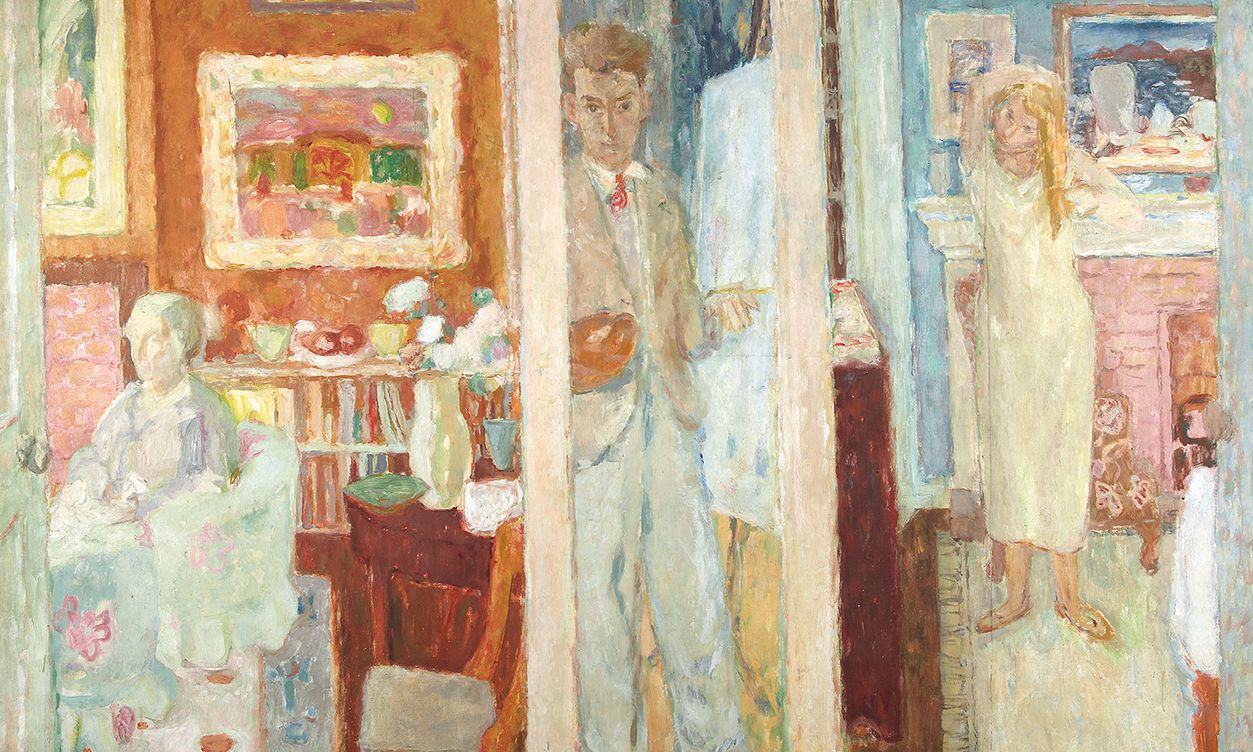William Gillies’s Interior (1938); domesticity ran through much of the work of the painter, who taught at Edinburgh College of Art
The Royal Scottish Academy
William Gillies (1898-1973) was a prolific Scottish painter, known for his landscapes and still-lifes, who trained and then taught at Edinburgh College of Art (ECA) for over 40 years. William Gillies: Modernism and Nation in British Art is a deeply researched book that presents a radically fresh perspective on Gillies. The author, Andrew McPherson (professor emeritus in sociology at the University of Edinburgh), makes compelling arguments for the importance of Gillies’s portraiture in our understanding of the artist, and for very different concerns at play than the “countryman-painter” persona of prevailing orthodoxy. That countryman myth, and the “lad o’ pairts” trope that the artist and writer Thomas Elder Dixon (1899-1978) used to explain Gillies and his work, is thoroughly and systematically dismantled in McPherson’s account.
There could not be a better time to produce a new book on the life and work of Gillies, coming, as it does, 50 years after the artist’s death and a century since he studied at the studio of André Lhote (1885-1962) in Paris. It is accompanied by an associated exhibition at the Royal Scottish Academy (RSA) in Edinburgh (until 28 January), which will tour nine venues across Scotland throughout 2024 and 2025.
The book begins with a concise preface and preview, which explains its scope to readers. It is vital to know that this is one of two books that McPherson has produced on Gillies and is the condensed, restructured version of a longer book, The Life, Times and Work of William Gillies 1893-1973, with endnotes and fuller ancillary listings, due to be published this year. At times, it is acutely evident that something is missing in this condensed version, to this reader at least. Still, early on a series of images and quotations, all linked to Gillies’s identity in some respect, leave the reader in no doubt of the existential concerns at the heart of the present publication, poignantly brought to the fore in Portrait of Emma (1921), Gillies’s portrait of his younger sister, a talented potter, painted in the wake of their father’s death.
Gillies’s mother was born in Kirriemuir, a place of symbolic significance in the inter-war cultural struggles in Scotland when J.M. Barrie’s popular book A Window in Thrums (1889) cloaked the town in kailyard sentimentality. Reality and fiction co-existed in a place that loomed large for the Gillies family growing up in Haddington. After serving overseas and in front-line trenches in the First World War, Gillies moved to Edinburgh where he had a traditional art training at ECA. At that time, Bohemian Edinburgh welcomed Modernism, and Gillies was part of a vibrant and energetic arts scene, showing his painting Landscape with Road and Sun (around 1935) at the Garret Studio, a hub for the arts in Scotland.
There are two compelling threads running through McPherson’s book. First, there is the presence of death in Gillies’s life, what the author calls the “unremitting pulse of untimely and arbitrary death” as a traumatic undercurrent that never left him. His father had died in 1921. Then, between 1927 and 1935, three artist friends died—William Crozier, William Munro and David Gunn—swiftly followed by the death of Gillies’s sister Emma in a psychiatric hospital in 1936. In 1943 came the supposed suicide of his friend, the author Ann Scott-Moncrieff. Furthermore, for more than three decades from the early 1930s Gillies also witnessed the painful decline and repeated admission to psychiatric care of his close friend, the artist Harold Morton, until his death in 1965.
The other notable thread that McPherson identifies in Gillies’s life is his encounter with the mental frailty of those around him. His mother worked in an asylum and the family home became a place for respite patients to stay during Gillies’s childhood, while his father experienced violent episodes that affected the entire household. There was a family history of unrecognised thyroid disorder, misdiagnosed as hysteria, with individuals who suffered consigned to mental institutions. Gillies had no way of knowing if it would affect him, too.
After the declaration of the Second World War in 1939, Gillies left his Edinburgh home, close to Leith docks and therefore a target for bombing, and moved to the Midlothian village of Temple. When his sister Janet and their mother died, the cottage at Temple became an extension to the landscape in his mind and is seen in paintings such as Garden, Winter Sunshine (1960), where inside and outside become attenuated, as did still-life and landscape, perception and imagination.
From his first recorded use of the pencil until his death, Gillies worked through the traumatic legacy of mental frailty, family and war. A private man who did not talk about himself, through McPherson’s study the artist’s existential concerns can now be better understood as something he fully explored in his paintings.
• William Gillies: Modernism and Nation in British Art, by Andrew McPherson. Edinburgh University Press, 280pp, 162 colour and 16 b&w illustrations, £25 (pb and ebook Epub), £100 (hb and ebook PDF), published 31 October 2023

